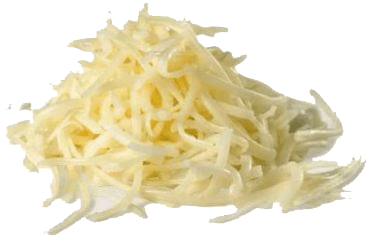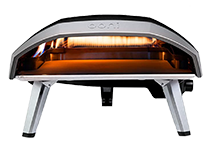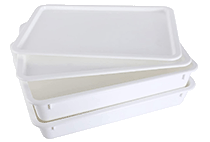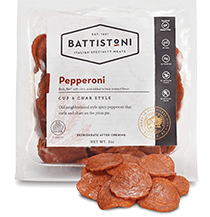One of the wonderful things about pizza is that you have endless choices of what goes on top. Not only does that apply to toppings like veggies or pepperoni, but it also applies to the cheese type on pizza.
You can have your way, from a cheese-less pie to one with extra cheese to a white pizza where cheese is the star. You can choose a cheese pizza where cheese is the topping, or use the cheese to complement other toppings.
Key Takeaways:
- Pizza offers endless possibilities for cheese customization, from a classic mozzarella-topped pizza to experimenting with different cheeses like pecorino, Romano, parmesan, ricotta, Havarti, cheddar, or provolone, and other high temp cheeses.
- Mozzarella remains the preferred choice for its melty, stringy texture and classic pizza flavor. Whole milk mozzarella is recommended for better melting consistency, while part-skim offers a lower-fat alternative.
- For individuals with dietary restrictions or preferences, going dairy-free on pizza is possible by using vegan mozzarella-style cheese or alternatives like goat cheese.
Table of Contents

I personally don’t get why you would choose to make your pizza cheeseless, since I’m a major fan of the perfect balance of dough, sauce and cheese. But hey, that’s what’s great about how customizable pizza is: you can choose your favorite, while I choose mine!
And it’s easy to switch it up and try different kinds (that is something I can get behind). Homemade pizza makes it even easier to choose the type of cheese you want. You have complete control over your ingredients and are not limited by a pizzeria’s offerings!
So, back to the question in the title: does the cheese type on pizza matter? While there’s something to be said for personal preference, let’s take a look at some of the characteristics of cheese related to its role atop pizza. Another personal preference is how much cheese to use on pizza, but we don’t judge.
Cheese Type on Pizza: Mozzarella or No Mozzarella?
Of course, the favorite variety of cheese for pizza is tried-and-true mozzarella. This makes sense, as it gives you the melty, stringy texture you’re after, as well as the classic pizza flavor.
That said, you can always play with different cheeses on your pizza. Other Italian cheeses that go well with this dish are pecorino, Romano, parmesan or ricotta. You may want to try other cheeses that melt well, such as Havarti, cheddar or provolone.
And it’s always fun to mix cheeses. For instance, go with a four-cheese pizza or sprinkle some parmesan on the top after your mozzarella-topped pizza is browned and melted to perfection.
But keep in mind that changing the cheese will change the pizza. Even science has agreed that mozzarella is the best choice when you’re going for that perfectly browned top that bubbles to make your mouth water. This cheese’s balance of moisture and oil during the cooking process gives you the browned cheese you want for a pizza.
But you can mix another cheese with mozzarella to achieve a different effect if that’s your preference. For less browning and a smoother experience in your mouth, add an oily cheese like provolone or Gruyere to your mozzarella. Or you could mix your mozzarella with cheddar or Colby for a uniform color and reduced bubbling.
Overall, use mozzarella for that classic pizza taste and texture, or try replacing or mixing mozzarella with different cheeses to find your favorite taste, texture and cooking qualities (or just to use up whatever kind of cheese you have in the fridge—we won’t judge).
Which Type of Mozzarella?
So if you decide to go with the good old classic of mozzarella cheese, you’ll soon realize the choices continue when you go to buy it at the store.
There are different kinds of mozzarella you can pick from, and yes, they do differ from one another when you cook them on your pizza. That’s because moisture and fat content of mozzarella matter.
First: Mozzarella fat content
You have a choice between part-skim and whole milk mozzarella when you buy this cheese from the supermarket. In other words, you’re choosing between low fat and full fat.
If you want that classic stretching of the cheese as you pull a piece from the pie, you need to top your pizza with whole milk mozzarella. The full-fat version of mozzarella simply melts better and turns into a better consistency on top of your pizza, while the skim version comes out a bit more like plastic than cheese.
But of course, if you want to save some fat and calories, you can always top your pizza with part-skim. Just keep in mind that you’re only adding a small amount of fat with the whole milk mozzarella, so you may find it worth it to gain the better consistency and browning.
Next up: Mozzarella moisture content
It may seem better to always buy the fancy, fresh mozzarella that’s full of moisture… it may even come in a tub of liquid. But when it comes to pizza, the drier the better. Pizzerias tend to use low-moisture mozzarella (which should give you a clue about the best type to buy for classic pizza!).
While part of the reason they choose it is that it lasts longer, it also gives a stronger flavor and melts better than the high-moisture counterpart. If you’re getting a soupy mess while cooking your pizza, your mozz’s moisture content is probably too high.
Can You Go Dairy-Free?
If you’re vegan, allergic to milk, lactose intolerant, following kosher traditions or simply choosing to skip dairy, you absolutely have the option to add dairy-free cheese to your pizza.
You should expect the consistency and taste to differ somewhat from a traditional mozzarella pizza, but you can enjoy pizza nonetheless. Choose a vegan mozzarella-style cheese from the store and use it just as you would milk-based mozzarella.
If your decision is to steer clear of cow’s milk rather than dairy altogether, you could go with goat cheese as the topping for your pizza.
Which Cheese Is Best for Pizza?
As you can see, there are endless ways to use cheese on your pizza! The choice may seem overwhelming, but instead it can be fun to experiment and try different flavors.
For that classic pizza flavor, ooey-gooeyness and bubbly, browned perfection, go with low-moisture, whole milk mozzarella. Otherwise, feel free to experiment based on your tastes, your consistency preferences and any dietary limitations/choices you may have.
Like we’ve said from the start, one of the great things about pizza is the way you can customize it just the way you like it, and that includes the cheese! So, the only thing about pizza cheese that matters is what matters to you.
Frequently Asked Quesitons
Can I make a delicious pizza without using any cheese?
Absolutely! While I emphasize the classic appeal of mozzarella, I can recognize the customizable nature of pizza, allowing you to go cheeseless or experiment with alternative toppings.
What is the significance of mozzarella fat content in pizza-making?
The fat content in mozzarella affects its melting consistency on the pizza. Whole milk mozzarella is recommended for that classic stretch and better overall texture, while part-skim provides a lower-fat option.
Are there alternative cheeses I can use besides mozzarella for pizza?
Yes, I can happily suggest various Italian cheeses like pecorino, Romano, parmesan, or ricotta, along with other melt-friendly options such as Havarti, cheddar, or provolone. Mixing different cheeses can also add unique flavors and textures.
Can I use dairy-free cheese for a vegan or lactose-free pizza?
Absolutely! If you’re vegan, lactose intolerant, or simply prefer dairy-free options, there are vegan mozzarella-style cheeses available.
How does mozzarella moisture content affect pizza quality?
Low-moisture mozzarella is recommended for pizza, providing a stronger flavor and better melting consistency compared to high-moisture variants. Too much moisture can result in a soupy mess during the cooking process.
Can I mix different cheeses on my pizza?
Yes, experimenting with cheese combinations is encouraged. Whether it’s creating a four-cheese pizza or combining mozzarella with other varieties, the fun of trying different flavors and textures is part of the journey.
Is there a recommended cheese for achieving the classic pizza taste and texture?
Yes, for that classic pizza flavor, ooey-gooeyness, and bubbly, browned perfection, I suggest using low-moisture, whole milk mozzarella.
How does the choice of cheese impact the browning of the pizza top?
Mozzarella is favored for achieving a perfectly browned top that bubbles during cooking. The balance of moisture and oil in mozzarella contributes to the desired browning effect. Mixing mozzarella with other cheeses can alter this outcome based on preference.
And we’ve made a nice list for block cheese and cheese graters for homemade pizza.












